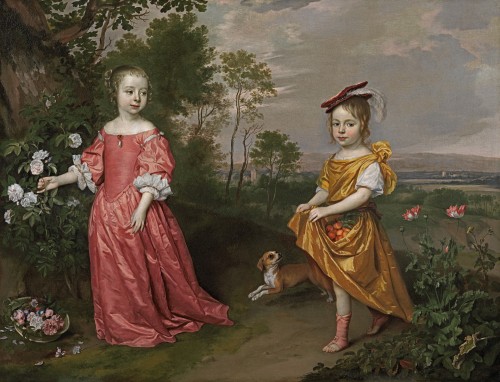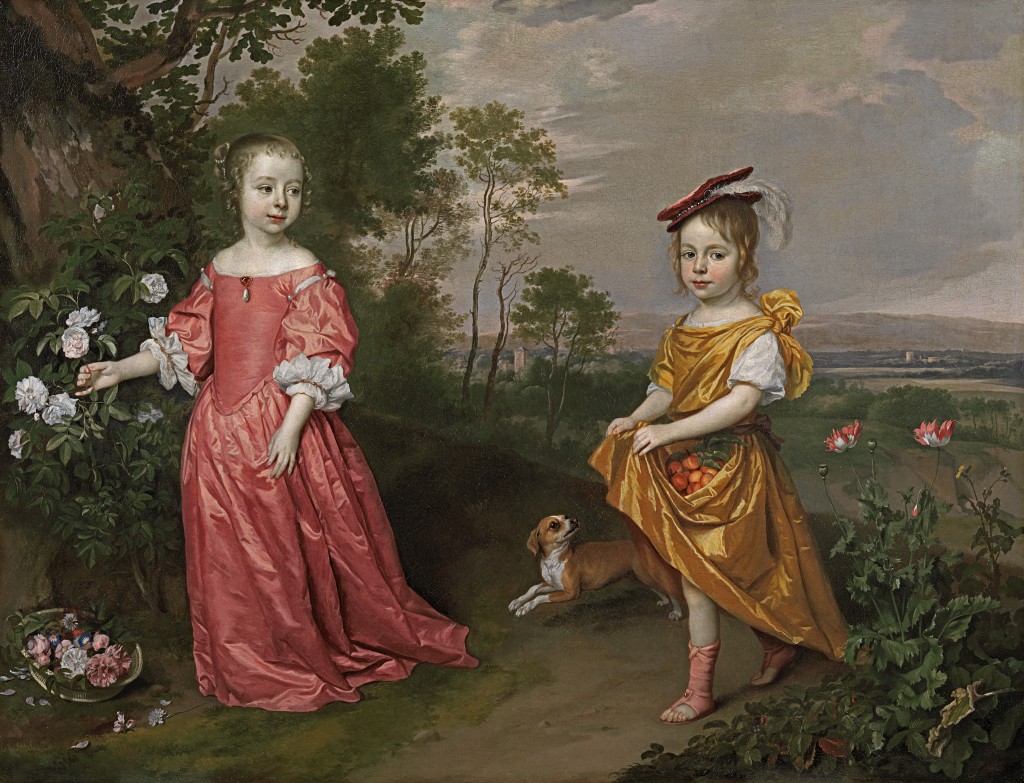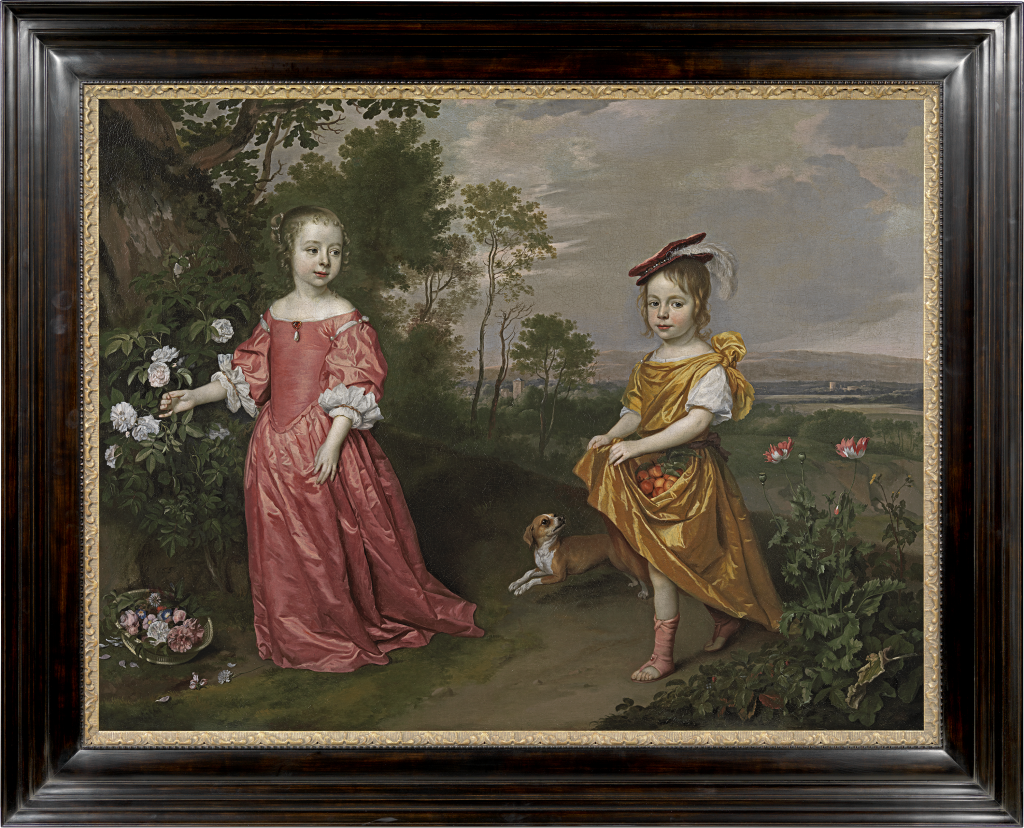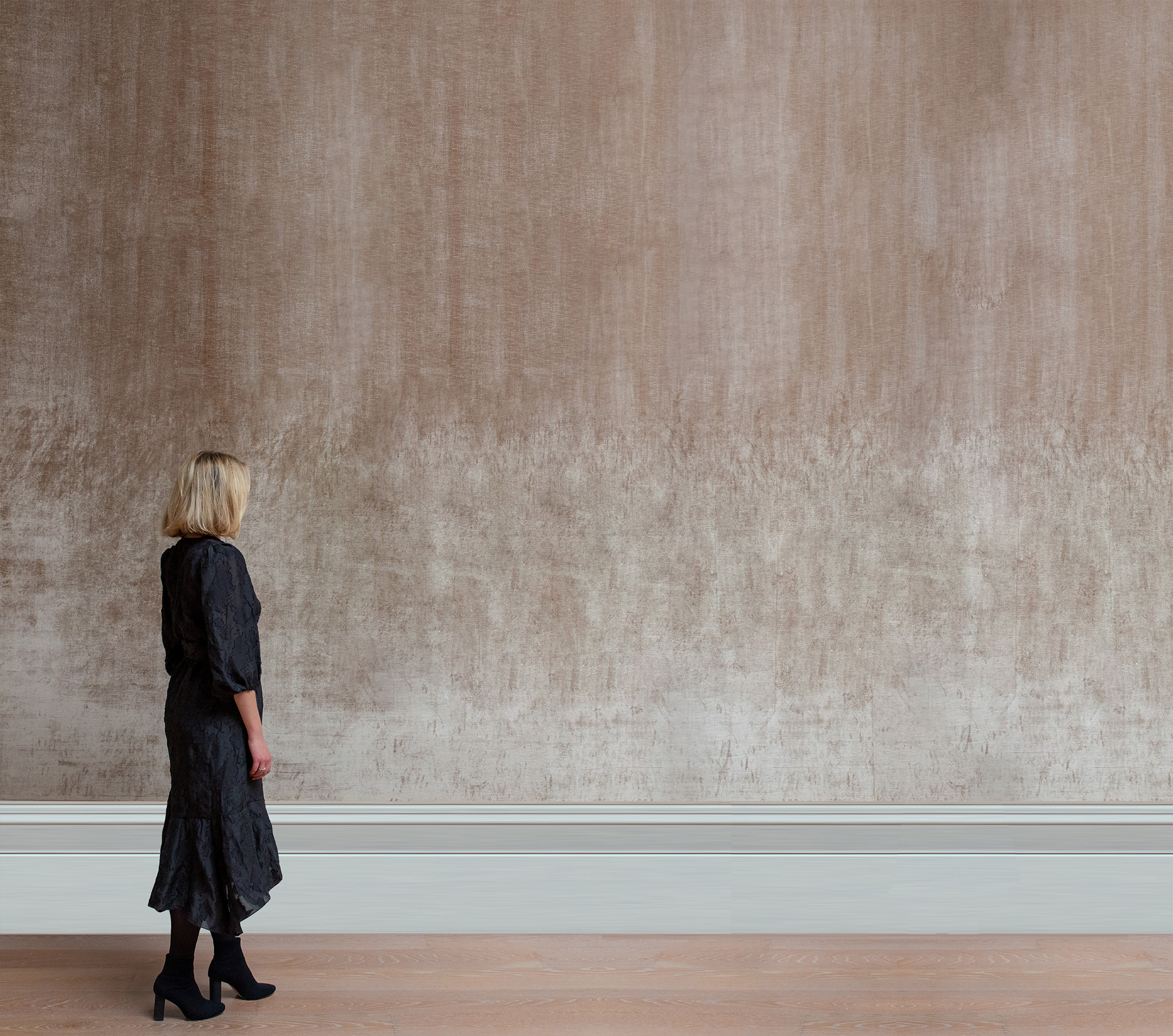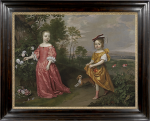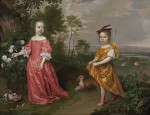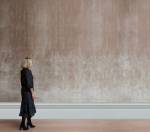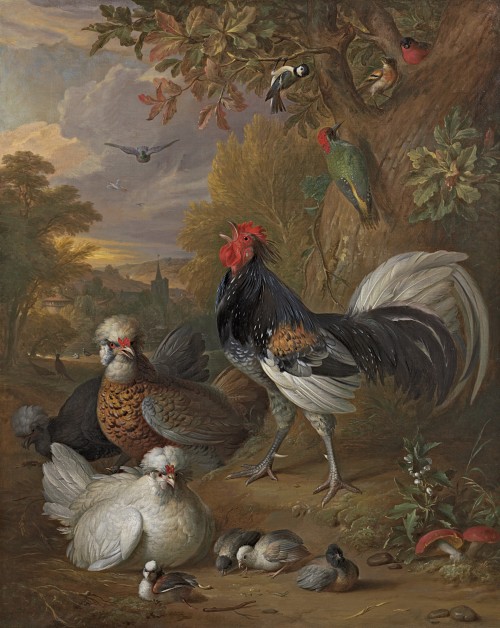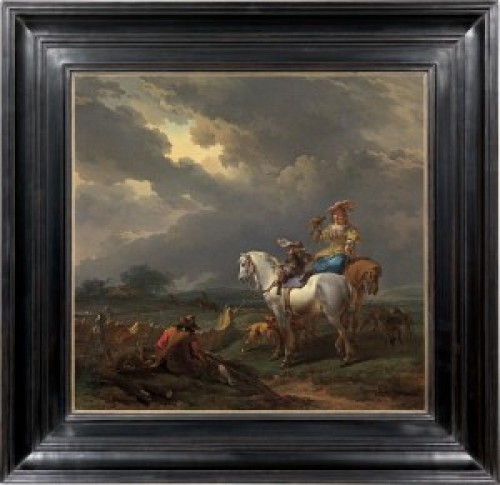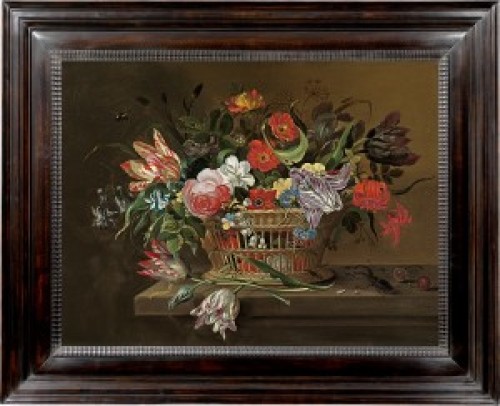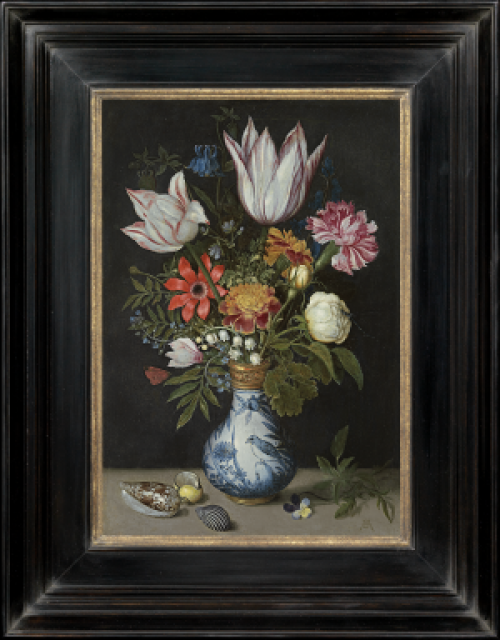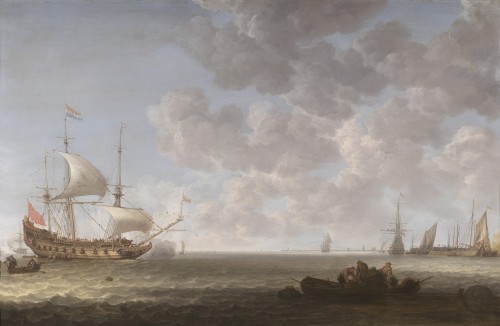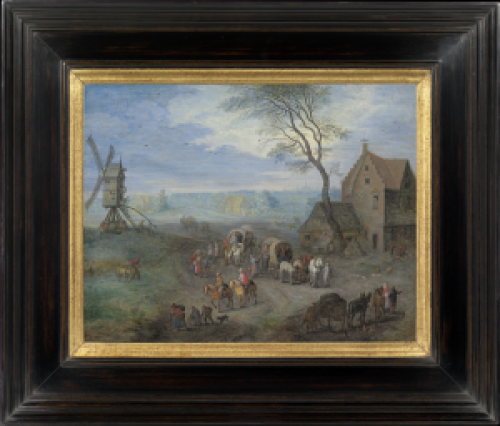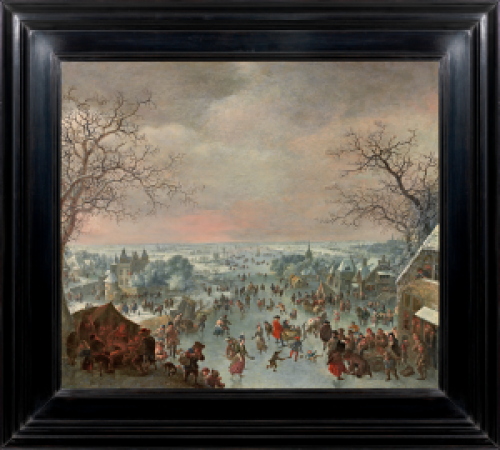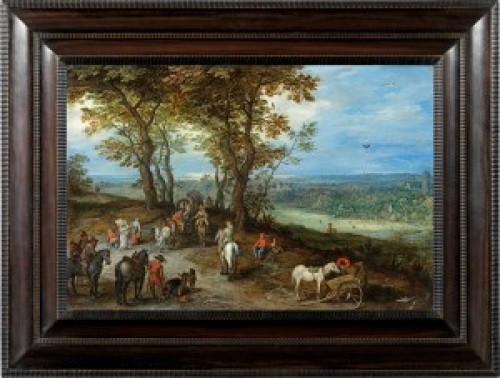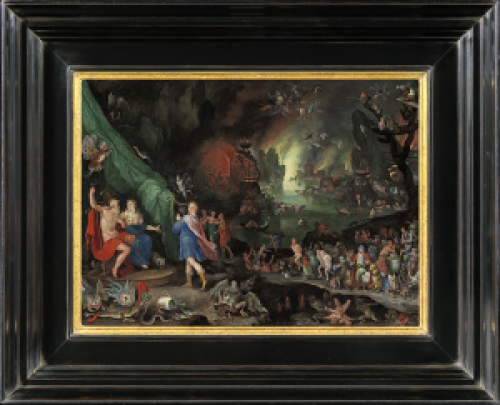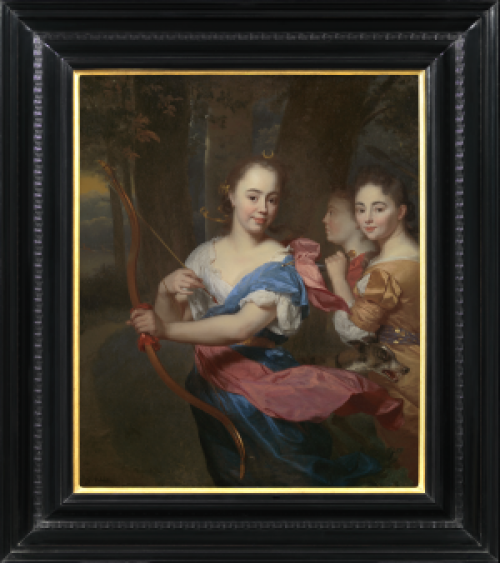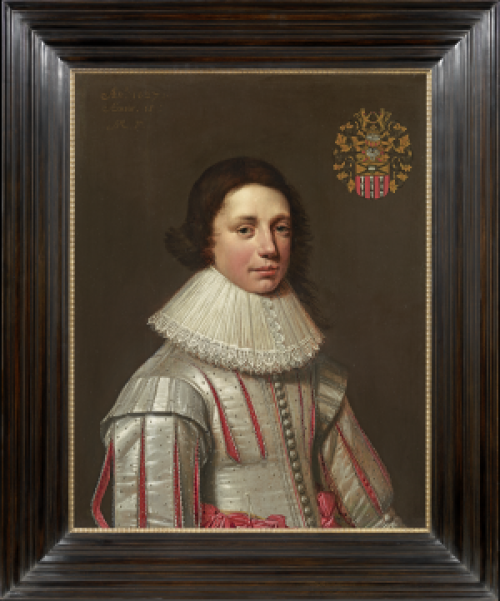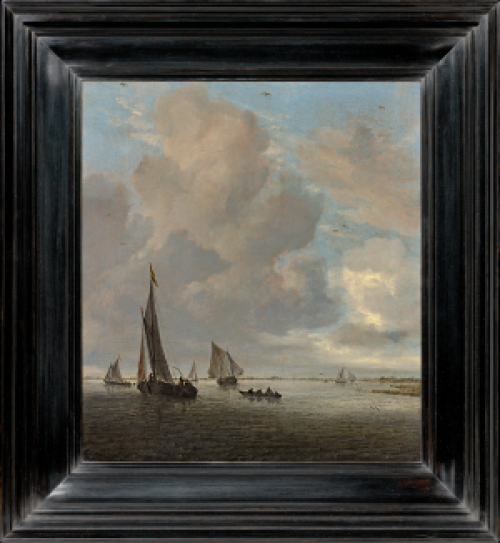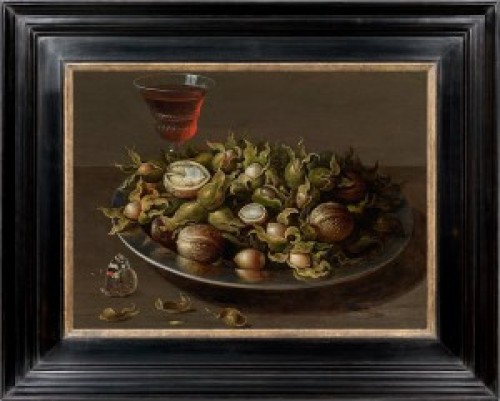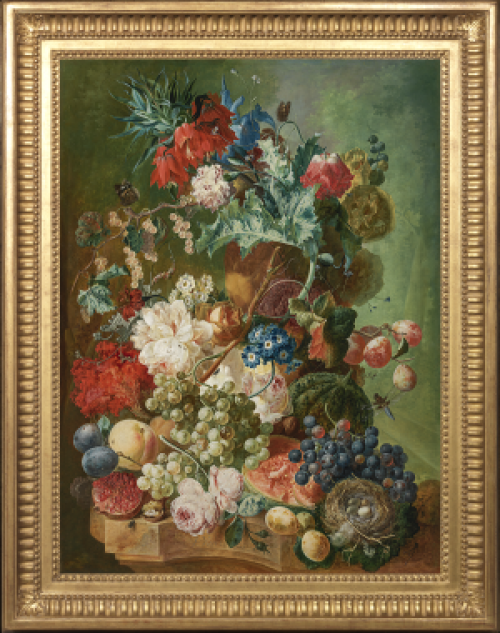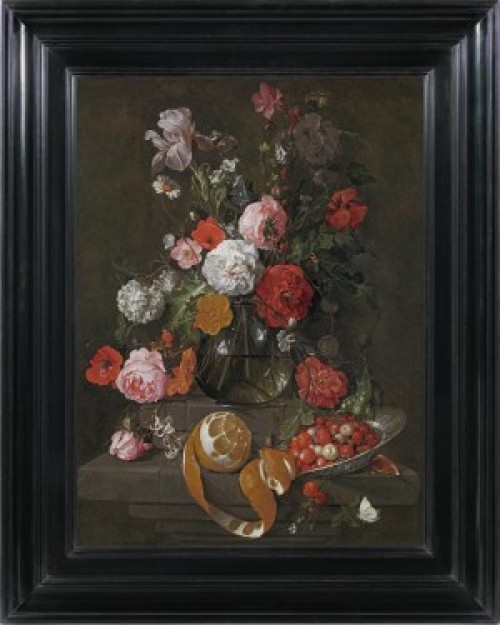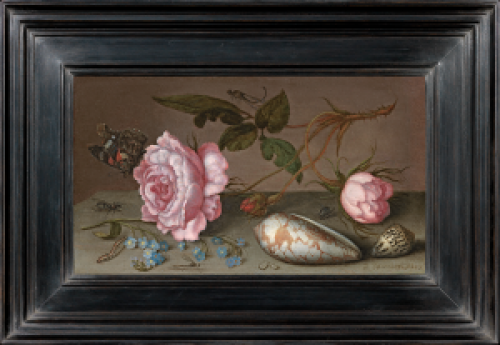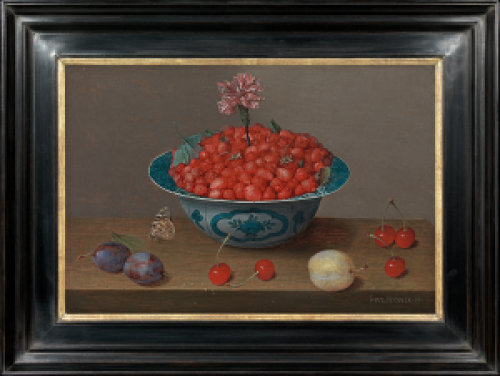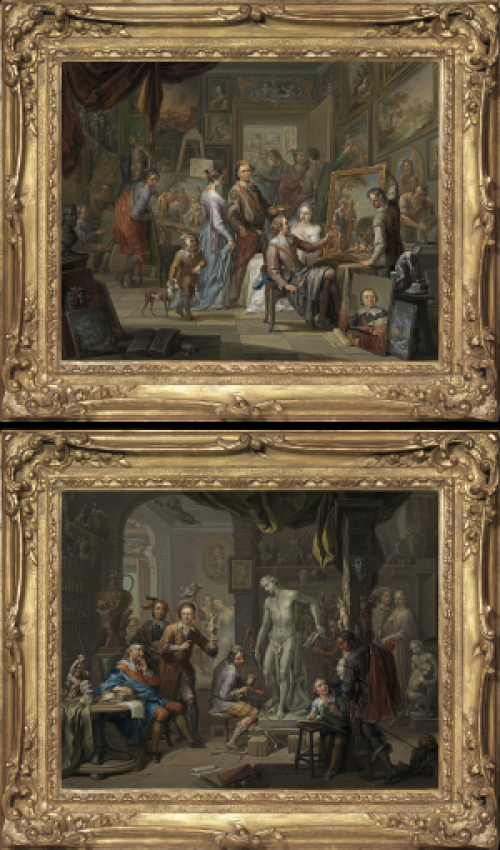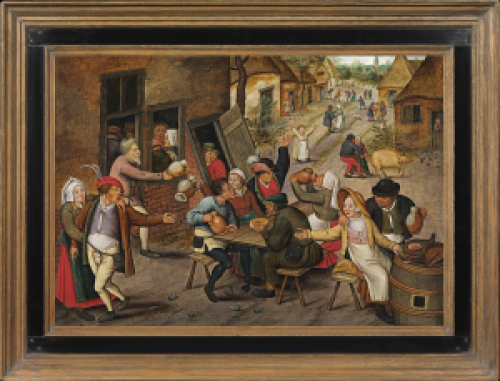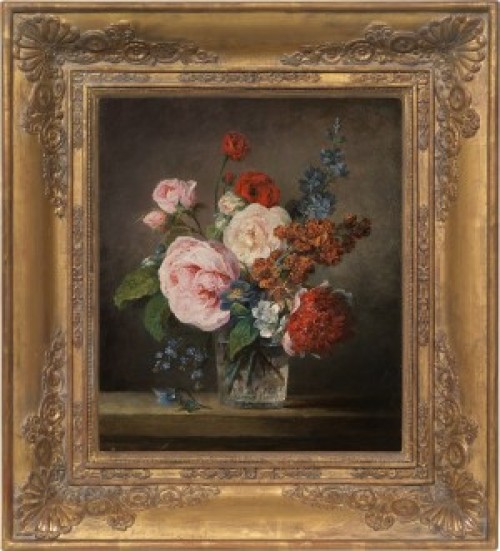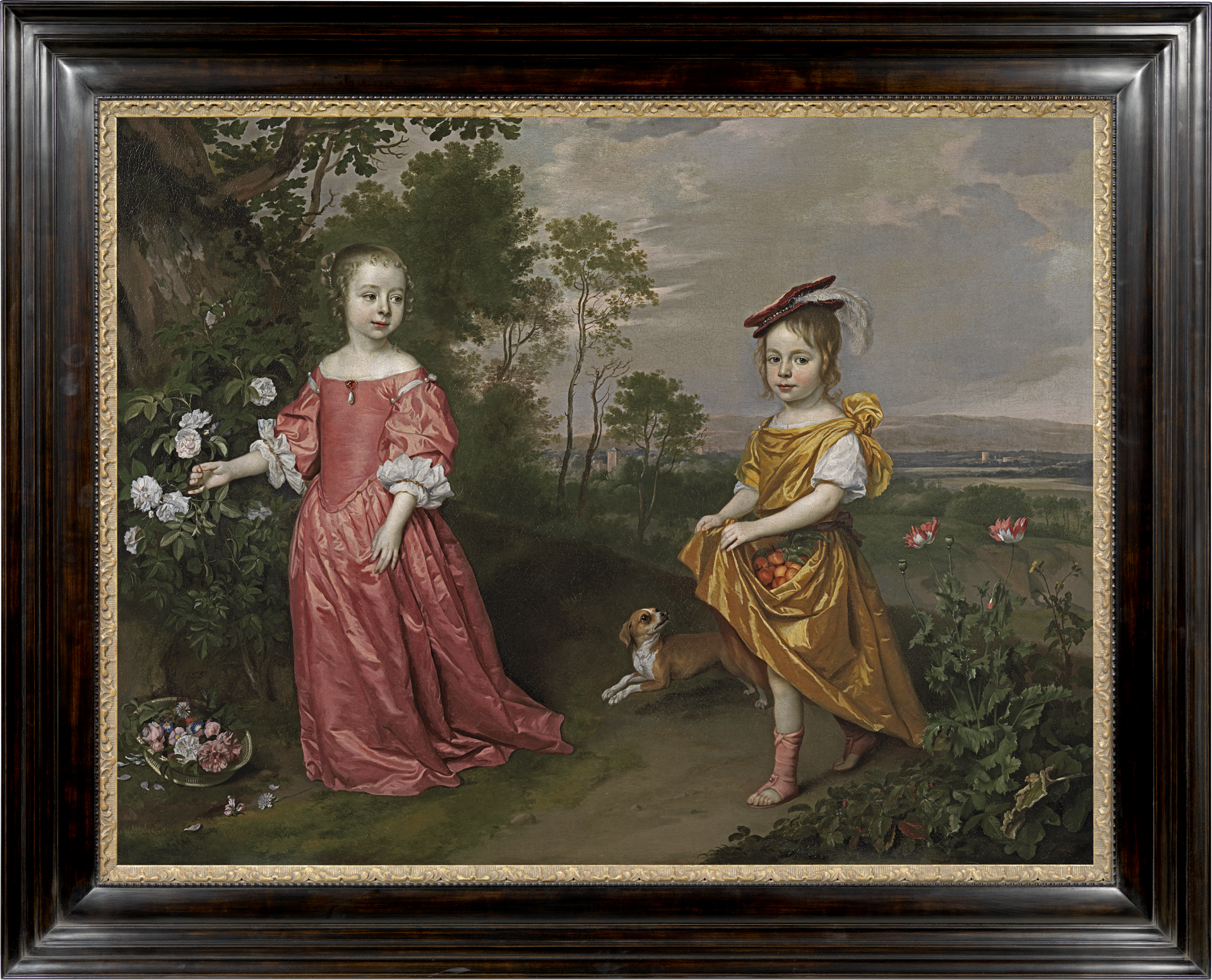JAN MIJTENS
1614 – The Hague - 1670
Ref: CB 148
Portrait of two children in a landscape, with their dog by their side
Signed and dated lower left: Joan Mytens / Ao 1655
Oil on canvas: 30 ¼ x 39 in / 76.8 x 99.1 cm
Frame size: 39 x 48 in / 99.1 x 121.9 cm
Provenance: Lieutenant-Colonel Duncan Macalester Loup (1751-1812), The Hague[1];
his sale, Frans Johannes Bosboom, The Hague, 20th August 1806, lot 109 (bt. Gram) William Makepeace Thackeray (1811-1863);
by descent to Mrs Edward Fisher, Welby Warren, Grantham
Sotheby’s London, 8th July 1930, lot 53 (124 gns. to Pyke) Arthur Tooth & Sons, 1933 Robert Tritton (d.1957), Godmersham Park, Kent, by 1946;
by inheritance to Mrs Robert Tritton, Godmersham Park, Kent;
her estate sale, Christie’s London, 8th July 1983, lot 82; Richard Green, London, 1983;
private collection, Guernsey
Exhibited:
London, Richard Green, Old Master Paintings, 1983, pp.16-17, no.5, illus. in colour
Literature:
Ralph Edwards, Early Conversation Pictures from the Middle Ages to about 1730. A Study in Origins, London 1954, pp.88, 143, no.30 (with incorrect size and wrongly dated after 1658) Alex Peter, Überlegungen zur höllandischen Bildnis- und Genremalerei am Ende ihres ‘Goldenen Zeitalters’, PhD thesis, Justus-Liebig University, Gießen 1996, p.167 Alexandra Nina Bauer, Jan Mijtens (1613/14-1670), Leben und Werk, Petersberg 2006, pp.258, no.A135; 416, illus.
Jan Mijtens came from a family of Flemish origin which settled in the northern Netherlands because of their Calvinist faith. They were merchants, lawyers and city officials. His grandfather Maerten Mijtens was saddle-maker to the Princes of Orange-Nassau and, like him, Jan spent his career in The Hague. He painted members of the upper-middle-class society in which he moved, and, increasingly from the 1660s, members of the Orange-Nassau family and their Court.
This portrait of two children epitomises the elegance and glamour which clients expected when commissioning Mijtens. The salmon-pink dress of the little girl and her brother’s golden silk robe glow against a subtle, exquisitely observed landscape. The hills and distant buildings are reminiscent of the Roman Campagna, reflecting the Dutch’s élite’s identification with the sophistication and achievements of ancient Rome. Gentlemen, as well as many artists, were expected to make a journey to Rome to complete their education: such a trip may be in store for the young boy. Whereas his sister is dressed in the height of fashion, in a miniature version of adult clothing, complete with a ruby and peal pendant glowing at her breast, the boy wears a fanciful adaptation of a Roman toga and sandals with a feathered cap. He is presented as a timeless, quasi-mythological figure, carrying apricots in his lap as symbols of a fruitful future. The girl gathers roses, reflecting her beauty and innocence and perhaps the fleeting carefreeness of childhood. The basket of flowers at her feet and the wildflowers and wild strawberries near her brother, underline the sense of nature’s abundance. A little dog, scampering between the two, emphasises the vivacity of youth.
Note on the provenance
This painting is first recorded in the collection of Lieutenant-Colonel Duncan Macalester Loup (1751-1812). As his name suggests, he came from a family of Scots descent which had been settled in the Netherlands since the first decade of the eighteenth century. He was born in Gorinchem and reached the rank of Lieutenant-Colonel in the Scots Brigade. Loup was still living in The Hague in 1810, but then moved to Guyana, where he died. At an auction of Loup’s collection in 1806, the present painting was preceded by another work by Mytens of the same size, ‘A family heirloom of two children in a pleasant landscape, with a sheep and two dogs’. Alexandra Bauer comments that this perhaps represents children from the same family as the present double portrait[2].
In the nineteenth century the Portrait of two children was in the collection of the celebrated Victorian novelist William Makepeace Thackeray (1811-1863), author of Vanity Fair (1847-8) and The Luck of Barry Lyndon (1844).
JAN (JOHANNES) MIJTENS
1614 – The Hague - 1670
Jan Mijtens was born in The Hague in 1614, the son of a saddler, David Mijtens, who was born in Brussels, and his wife Judith Hennings, from Middelburg[3]. The Mijtens family had moved from the Spanish Netherlands because of their Calvinist faith. Jan may have studied with his uncles, the portrait painters Daniel Mijtens the Elder (c.1590-c.1647) and Isaak Mijtens (c.1602-1666). Daniel Mijtens had had a flourishing career at the Court of Charles I of England before being superseded by Anthony van Dyck and returning to the Netherlands around 1634. In 1642 Jan married his first cousin Anna, daughter of Daniel Mijtens the Elder; they had ten children, including the painter Daniel Mijtens the Younger (1644-1688).
Mijtens spent his whole life in The Hague, seat of the Stadtholder’s Court. He painted Biblical, history and genre works, such as Abraham dismissing Hagar and Ishmael, 1640 (Hohenbuchau Collection, on permanent loan to the Liechtenstein Princely Collections, Vienna), but chiefly specialised in portraiture. He became a member of The Hague Guild of St Luke in 1639. In 1656 Mijtens was a founder member of The Hague Confrerie Pictura, set up specifically to protect the interests of painters, rather than the wider trades encompassed by the Guild. He served on its committee 1656-69 and was Dean 1669-70 and 1670-71. Mijtens also served as a Captain of the Hague Rifle Guild (St Sebastiaensdoelen) from 1659, a position reflecting his prestige and prosperity. He was an active member of the Dutch Reformed Church, holding various positions at The Hague’s Groote Kerk.
Mijtens established himself as a sought-after portrait painter in The Hague in the 1640s and 50s. Among his clients were colleagues from the Rifle Guild, city officials, neighbours and friends from the upper-middle-class circles in which he moved. In the 1660s he gained commissions from the Court and aristocracy. He painted many members of the Orange-Nassau family, including The Elector Friedrich Wilhelm of Brandenburg, Louise-Henriette of Orange-Nassau and their children, c.1666 (Schlossmuseum Oranienburg). He often painted portraits historiés, for example presenting a young woman as the goddess Diana, or sometimes introducing a Biblical element, as in the Family portrait with St John the Baptist (Nationalmuseum, Stockholm).
Mijtens excelled in rendering the lavish silks and rich colours of aristocratic dress. He was adept at orchestrating large group portraits, such as The family of Willem de Kerckhoven, 1652 (Haags Historisch Museum). Here, as in many of Mijtens’s works, the family is set in an Italianate landscape and the eldest son wears an adaptation of Classical dress, emphasising their sophistication and identification with ancient Roman culture. Putti emerging from the clouds add a further baroque element.
Among Mijtens’s pupils were the portraitist Nicolaes Lissant and the architect Urbanus van Yperen. Jan Mijtens died in The Hague in 1670.
[1] Information on Duncan Macalester Loup from the Getty Provenance Index.
[2] Bauer, op. cit., p.258; the second painting is Bauer pp.247-8, no.A124, dated 1649; p.411, illus.
[3] A detailed biography of Jan Mijtens can be found in AN Bauer, op. cit., Jan Mijtens, pp.20-28.

